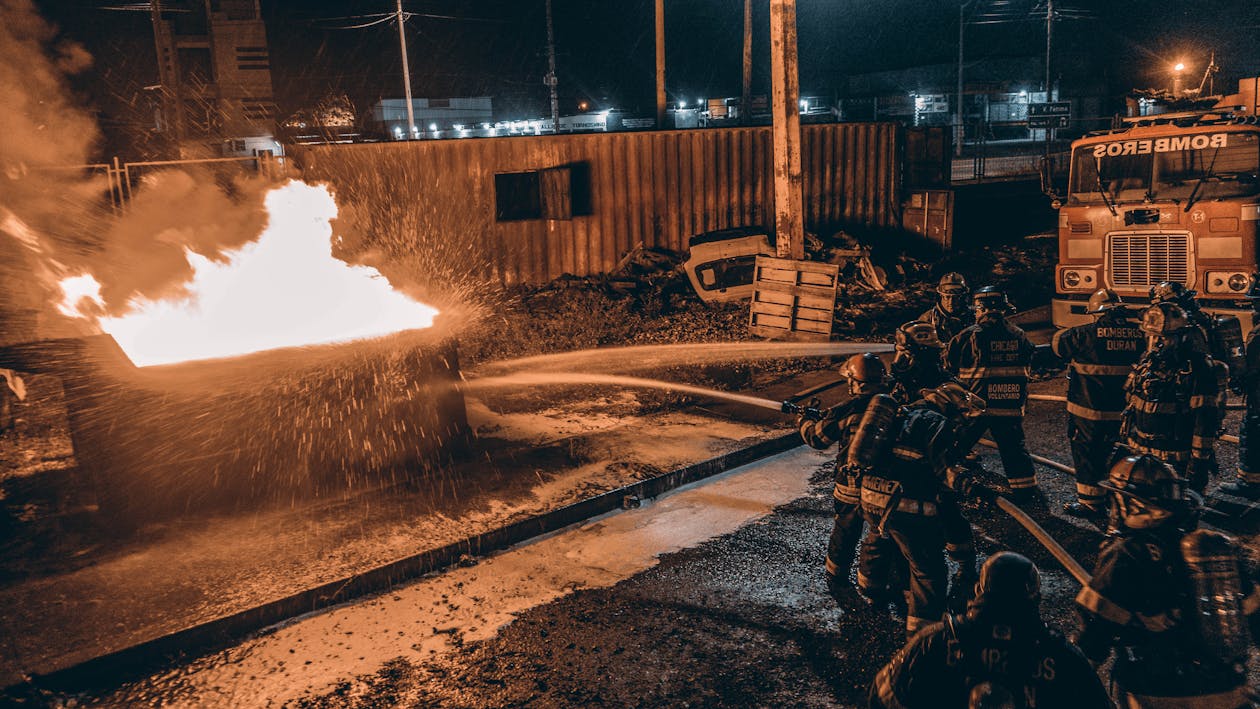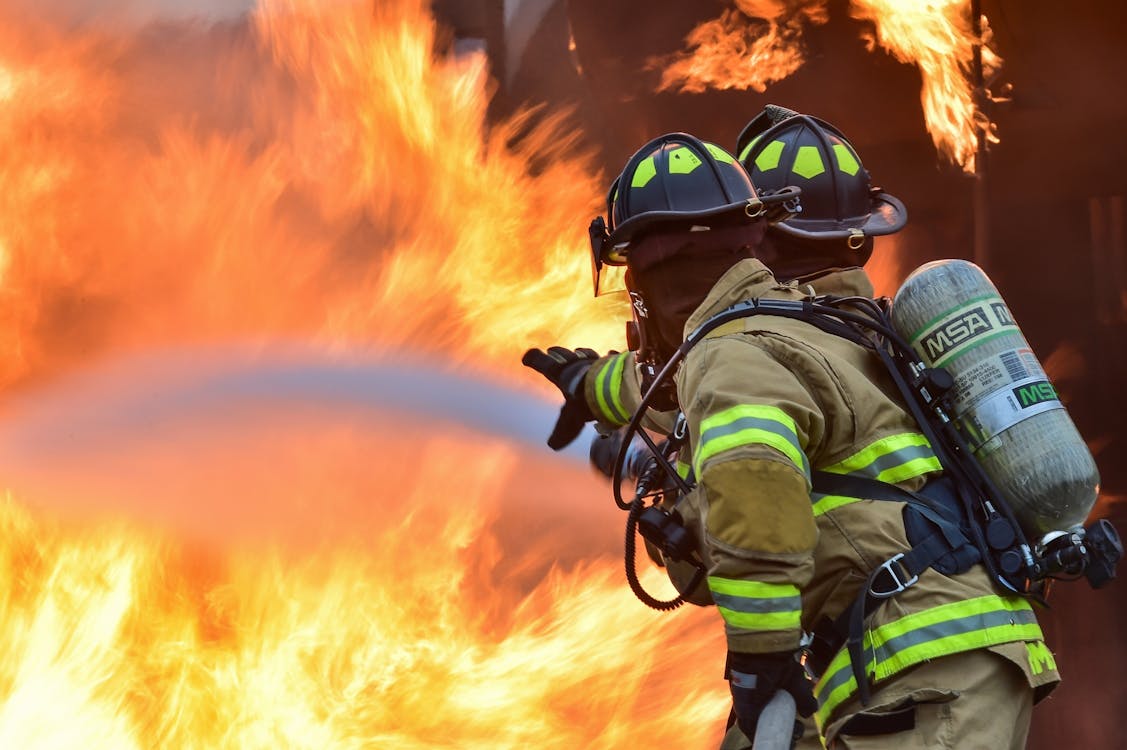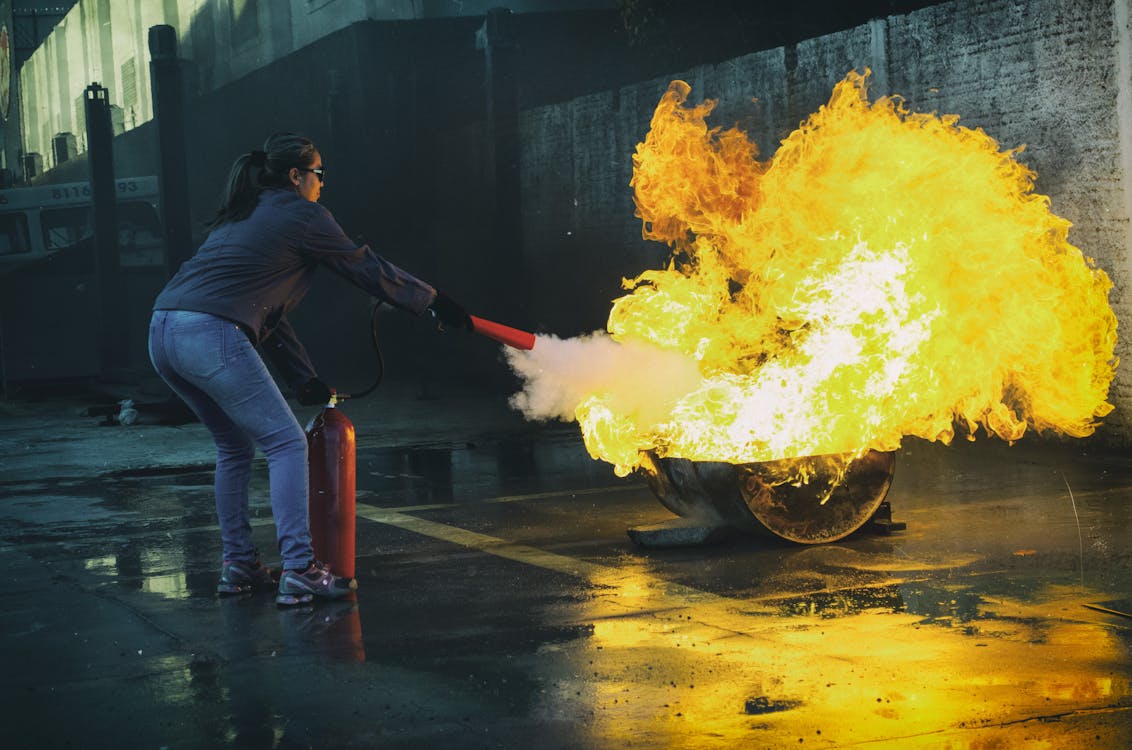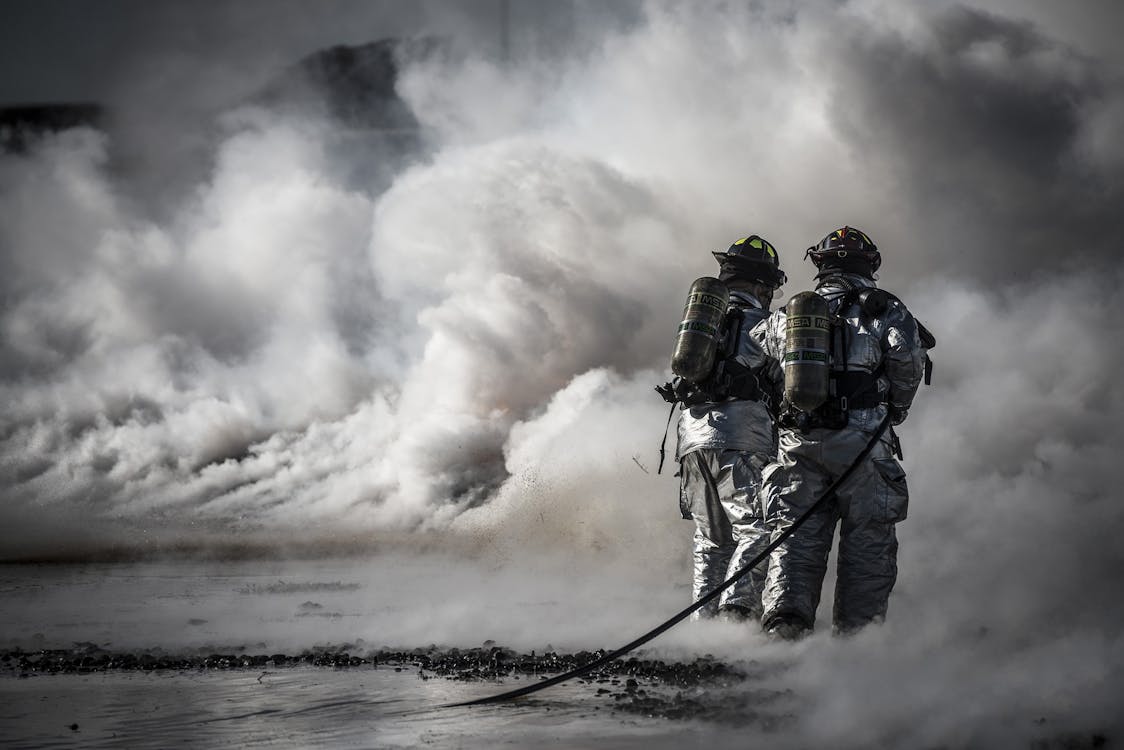
Fire drills are important practices that simulate emergency situations, helping people prepare for and respond to a potential fire. These drills provide an opportunity for individuals to learn what to do in the event of a fire and how to safely evacuate the area. The benefits of Fire Moke Drills of conducting fire drills are numerous, ranging from increased safety awareness to improved emergency response times. In this essay, we will discuss the various benefits of fire drills in detail.
- Improved Safety Awareness: One of the primary benefits of fire drills is that they improve safety awareness. By practicing fire drills regularly, individuals become more familiar with the layout of the building, the location of fire exits, and the proper procedures for evacuating the area. This knowledge can be crucial in the event of an actual emergency, as it can help individuals to act quickly and confidently, potentially saving lives.
- Reduced Panic: Another benefit of fire drills is that they can help reduce panic during an actual emergency. By practicing evacuation procedures in a controlled setting, individuals can become more comfortable with the process and less likely to panic. Panic can be dangerous during a fire, as it can lead to confusion and poor decision-making, potentially putting lives at risk.
- Improved Response Times: Fire drills can also help improve response times during an actual emergency. By practicing evacuation procedures, individuals can learn the quickest and safest routes to exits, helping them to evacuate the building more quickly. This can be particularly important in large buildings or buildings with multiple floors, where a delay in evacuation could be deadly.
- Identification of Safety Hazards: Fire drills can also help identify safety hazards that may have been overlooked or ignored. During a drill, individuals may notice blocked exits, malfunctioning fire alarms, or other safety hazards that need to be addressed. By identifying these hazards and taking action to address them, individuals can help prevent potential accidents and injuries.
- Increased Preparedness: Fire drills can also increase overall preparedness for emergencies. By practicing evacuation procedures, individuals become more familiar with the process of evacuating a building, which can be helpful in other emergency situations as well. Additionally, fire drills can help individuals to develop emergency plans for their homes or other locations, which can be beneficial in the event of a fire or other emergency.
- Improved Teamwork: Fire drills can also help improve teamwork in the workplace or other settings. By working together to evacuate a building, individuals can learn to rely on each other and communicate effectively during an emergency. This can be especially important in settings where teamwork is essential, such as hospitals, schools, or other high-risk environments.
- Compliance with Regulations: Fire drills may be required by law or regulations in certain settings, such as schools or healthcare facilities. Conducting regular fire drills can help ensure compliance with these regulations and help prevent fines or other penalties for non-compliance.
- Cost Savings: Finally, fire drills can help save costs by preventing damage to property or loss of life in the event of a fire. By identifying and addressing safety hazards, individuals can help prevent fires from occurring in the first place. Additionally, by improving response times and reducing panic during an emergency, individuals can help minimize damage and prevent the need for costly repairs or reconstruction.
A fire drill is a simulated emergency procedure that is practiced to prepare people for the possibility of a fire. During a fire drill, individuals are typically instructed to evacuate a building quickly and safely, following specific procedures and using designated exits. The goal of a fire drill is to ensure that everyone is familiar with the evacuation procedures and can evacuate the building quickly and safely in the event of a real fire.
Fire drills are typically conducted in workplaces, schools, and other public buildings.

They may be required by law or regulations in certain settings, such as schools, healthcare facilities, or high-rise buildings. In some cases, fire drills may be conducted by local fire departments or emergency responders to provide additional training and support.
There are several different types of fire drills that may be conducted, including partial evacuations, full evacuations, and fire alarm tests. Partial evacuations may involve evacuating only a portion of a building, such as a single floor or wing, while full evacuations involve evacuating the entire building. Fire alarm tests may be conducted to ensure that the alarms are working properly and that individuals know what to do when they hear the alarm.
During a fire drill, individuals are typically instructed to evacuate the building quickly and calmly, following specific procedures. This may involve using designated exits, stairwells, or fire escapes, and avoiding elevators or other potentially dangerous areas. In some cases, individuals may be instructed to gather at a designated assembly point outside the building, where attendance can be taken and further instructions can be provided.
Fire drills may be conducted at various intervals, depending on the regulations or policies in place. They may be conducted annually, quarterly, or more frequently, depending on the level of risk or the requirements of local regulations. It is important to ensure that all individuals are informed of the schedule and timing of fire drills so that they can participate and prepare accordingly.
Overall, fire drills are an important part of emergency preparedness that can help individuals and organizations to be better prepared for the possibility of a fire.
By practicing evacuation procedures and ensuring that everyone is familiar with the proper protocols, fire drills can help minimize the risk of injury or damage in the event of a real emergency. It is important to take fire drills seriously and to participate fully, in order to ensure that everyone is prepared and can respond appropriately in the event of a fire.
Fire drills are an important component of emergency preparedness and safety planning. By practicing evacuation procedures and ensuring that everyone is familiar with the proper protocols, fire drills can help minimize the risk of injury or damage in the event of a real emergency.
In workplaces, schools, and other public buildings, fire drills are typically required by law or regulations.

These regulations may specify the frequency of fire drills, the procedures to be followed during a fire drill, and the requirements for documenting and reporting on fire drills. For example, in the United States, the Occupational Safety and Health Administration (OSHA) requires that employers develop and implement a written emergency action plan, which includes procedures for fire drills.
Fire drills can take different forms, depending on the nature of the building, the level of risk, and the objectives of the drill. Partial evacuations may involve evacuating only a portion of a building, such as a single floor or wing, while full evacuations involve evacuating the entire building. Fire alarm tests may be conducted to ensure that the alarms are working properly and that individuals know what to do when they hear the alarm.
Regardless of the type of drill, the goal of a fire drill is to ensure that everyone is familiar with the evacuation procedures and can evacuate the building quickly and safely in the event of a real fire. This involves identifying the designated exits, knowing how to use them, and following any other procedures or instructions provided by the building management or emergency responders.
During a fire drill, individuals are typically instructed to evacuate the building quickly and calmly, following specific procedures.
This may involve using designated exits, stairwells, or fire escapes, and avoiding elevators or other potentially dangerous areas. In some cases, individuals may be instructed to gather at a designated assembly point outside the building, where attendance can be taken and further instructions can be provided.
In addition to practicing evacuation procedures, fire drills may also be used to identify areas of improvement in the building’s fire safety plan. For example, if individuals are having difficulty evacuating a particular area of the building, or if there are bottlenecks or other obstacles that are impeding the evacuation process, these issues can be addressed and resolved during subsequent drills.
Fire drills can also be an opportunity to educate individuals on fire safety and prevention. This may include providing information on fire extinguishers, smoke detectors, and other fire safety equipment, as well as on the common causes of fires and how to avoid them.
By increasing awareness and knowledge of fire safety, individuals can better understand the risks and take steps to prevent fires from occurring in the first place.

In addition to the practical benefits of fire drills, there are also psychological benefits. By practicing evacuation procedures and preparing for emergencies, individuals can feel more confident and less anxious in the event of a real emergency. This can help reduce the likelihood of panic or confusion during an emergency, which can in turn help to minimize the risk of injury or damage.
Furthermore, fire drills can foster a culture of safety and preparedness within an organization or community.
By prioritizing emergency preparedness and regularly practicing evacuation procedures, individuals can develop a greater sense of responsibility and commitment to safety. This can help to create a more resilient and proactive community that is better equipped to respond to emergencies and minimize the impact of disasters.
fire drills are an essential component of emergency preparedness and safety planning. They provide an opportunity to practice evacuation procedures, identify areas of improvement, educate individuals on fire safety, and foster a culture of safety and preparedness.
By taking fire drills seriously and participating fully, individuals can help to minimize the risk of injury or damage in the event of a real emergency.
Fire drills are an ongoing process and should be conducted regularly to ensure that everyone is familiar with the evacuation procedures and protocols. The frequency of fire drills may depend on various factors, such as the size of the building, the number of occupants, and the level of risk. For example, schools and healthcare facilities may require more frequent fire drills than office buildings or retail stores.
Fire drills may also be tailored to specific scenarios, such as fires in different parts of the building, different times of day, or different weather conditions. By simulating different scenarios and conditions, individuals can be better prepared to respond to a real emergency.
In addition to fire drills, organizations may also conduct other types of emergency drills, such as earthquake drills, tornado drills, or active shooter drills.
These drills serve a similar purpose to fire drills, by preparing individuals to respond to different types of emergencies and ensuring that everyone is familiar with the proper protocols.

During a fire drill, individuals should follow the designated evacuation routes and avoid any potential hazards, such as smoke or flames. They should also avoid using elevators and instead use the stairs to evacuate the building. In some cases, individuals may be required to crawl low to the ground to avoid smoke inhalation.
Once outside the building, individuals should gather at a designated assembly point and wait for further instructions. Attendance should be taken to ensure that everyone has evacuated safely, and any missing individuals should be located and accounted for.
In addition to practicing evacuation procedures, organizations may also use fire drills as an opportunity to review and update their fire safety plan. This may include identifying potential hazards or areas of concern, ensuring that fire extinguishers and smoke detectors are in good working order, and reviewing emergency contact information.
It is important to note that fire drills are not a substitute for regular fire safety maintenance and inspection. Organizations should regularly inspect and maintain their fire safety equipment, such as fire extinguishers and smoke detectors, to ensure that they are in good working order. Any issues should be addressed promptly to prevent the risk of fire or other emergencies.
Finally, it is important to take fire drills seriously and participate fully. While it may be tempting to treat fire drills as a disruption to daily routines, they are an important component of emergency preparedness and safety planning. By taking fire drills seriously and participating fully, individuals can help to ensure that they are prepared to respond in the event of a real emergency.
fire drills are an essential component of emergency preparedness and safety planning. They provide an opportunity to practice evacuation procedures, identify areas of improvement, and foster a culture of safety and preparedness. By conducting fire drills regularly and taking them seriously, organizations can help to minimize the risk of injury or damage in the event of a real emergency.
- Increases awareness: Fire drills help individuals become more aware of the risks associated with fires and how to respond in an emergency.
- Promotes safety culture: Fire drills promote a culture of safety and preparedness in organizations by encouraging individuals to take emergency procedures seriously.
- Identifies potential hazards: Fire drills provide an opportunity to identify potential hazards or areas of concern and take corrective action to minimize the risk of fires.
- Practice evacuation procedures: Fire drills allow individuals to practice evacuation procedures, including identifying exit routes, using stairs instead of elevators, and crawling low to the ground to avoid smoke inhalation.
- Review emergency plans: Fire drills provide an opportunity to review and update emergency plans, including identifying emergency contacts and ensuring that fire safety equipment is in good working order.
- Tailored to specific scenarios: Fire drills can be tailored to specific scenarios and conditions, such as different parts of the building or different weather conditions.
- Compliance with regulations: Fire drills are often required by regulations and compliance standards to ensure that organizations are prepared for emergencies.
- Improves response time: Regular fire drills can help to improve response times and minimize the risk of injury or damage in the event of a real emergency.
- Facilitates accountability: Fire drills facilitate accountability by ensuring that everyone is accounted for during an evacuation and any missing individuals are located.
- Reduces panic: Regular fire drills can help to reduce panic and confusion during an emergency by providing individuals with the confidence and skills to respond appropriately.
The specific requirements and regulations for fire drills may vary depending on the location, industry, and type of building. However, here are some general guidelines and regulations that organizations should follow to ensure compliance with government norms and rules for fire drills:
- Conduct regular fire drills: Organizations should conduct fire drills regularly, at least once per year, and more frequently for high-risk areas such as hospitals, schools, and large office buildings.
- Develop and review fire safety plans: Organizations should develop and regularly review fire safety plans, including identifying emergency exits, evacuation procedures, and fire safety equipment.
- Train employees: Employees should be trained on fire safety procedures and emergency response protocols, including how to evacuate the building and how to use fire safety equipment such as fire extinguishers.
- Conduct drills during different times and scenarios: Fire drills should be conducted during different times of the day and in different scenarios, such as during inclement weather or when certain exits are blocked.
- Ensure participation: All employees should participate in fire drills, and attendance should be taken to ensure that everyone has evacuated safely.
- Assign roles and responsibilities: Organizations should assign roles and responsibilities during fire drills, such as identifying individuals responsible for evacuating disabled or injured persons.
- Maintain fire safety equipment: Fire safety equipment, such as fire extinguishers and smoke detectors, should be regularly inspected and maintained to ensure that they are in good working order.
- Review and update emergency contact information: Emergency contact information should be reviewed and updated regularly to ensure that it is accurate and up-to-date.
- Comply with government regulations: Organizations should comply with government regulations and requirements related to fire safety, including fire codes, building codes, and OSHA regulations.
- Document and review drills: Organizations should document and review fire drills, including any areas of improvement or corrective action taken, to ensure continuous improvement in emergency preparedness and response.
By following these guidelines and regulations, organizations can ensure compliance with government norms and rules of fire drills, and promote a culture of safety and preparedness in their workplace.

Fire drill safety is governed by a number of laws and regulations at the local, state, and federal levels. Here are some of the key legal requirements that organizations must comply with:
- National Fire Protection Association (NFPA) codes: The NFPA develops codes and standards related to fire safety, including requirements for fire drills. The NFPA 101: Life Safety Code, for example, requires that fire drills be conducted at least once per quarter in certain types of buildings.
- Occupational Safety and Health Administration (OSHA) regulations: OSHA requires employers to provide a safe and healthy workplace, including implementing fire safety programs and conducting fire drills. OSHA standards related to fire safety can be found in 29 CFR 1910.36 and 1910.37.
- State and local fire codes: State and local governments often have their own fire codes and regulations that organizations must comply with. These codes may include requirements for fire drills, evacuation procedures, and fire safety equipment.
- Building codes: Building codes often require that certain types of buildings have fire alarm systems, sprinklers, and other fire safety equipment. These codes may also specify requirements for fire drills and emergency procedures.
- Americans with Disabilities Act (ADA): The ADA requires that organizations provide equal access to individuals with disabilities, including during emergency situations. Organizations must ensure that evacuation procedures and fire drills accommodate individuals with disabilities.
- Environmental Protection Agency (EPA) regulations: The EPA has regulations related to the storage and handling of hazardous materials that may pose a fire risk. Organizations must comply with these regulations and ensure that hazardous materials are stored and handled safely.
Organizations that fail to comply with these legal requirements may face fines, penalties, and legal liability in the event of a fire or other emergency. It is important for organizations to stay up-to-date on the latest legal requirements related to fire drill safety and ensure that they are implementing best practices to promote a culture of safety and preparedness in their workplace.

If an organization is ignoring legal requirements and best practices related to fire drill safety, there are several steps you can take:
- Report the non-compliance: You can report the non-compliance to the appropriate regulatory agency, such as OSHA, the local fire department, or the state fire marshal’s office.
- Inform management: You can inform management about the non-compliance and request that they take action to address the issue. You may want to document your concerns and any communication with management in writing.
- Consult with a lawyer: If the organization’s non-compliance poses a significant risk to your safety or the safety of others, you may want to consult with a lawyer who specializes in workplace safety and employment law.
- Refuse to participate: If you feel that participating in a fire drill would put you or others in danger due to non-compliance, you have the right to refuse to participate. However, you should discuss your concerns with management and document your decision in writing.
It is important to take non-compliance with fire drill safety seriously, as failure to comply with legal requirements and best practices can result in serious injury, death, or legal liability. By reporting non-compliance and taking appropriate action, you can help promote a safer workplace for yourself and others.